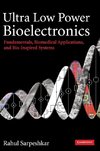
-
 Anglický jazyk
Anglický jazyk
Development of HfO2-Based Ferroelectric Memories for Future CMOS Technology Nodes
Autor: Stefan Ferdinand Müller
This thesis evaluates the viability of ferroelectric Si:HfO2 and its derived FeFET application for non-volatile data storage. At the beginning, the ferroelectric effect is explained briefly such that the applications that make use of it can be understood.... Viac o knihe
Na objednávku, dodanie 2-4 týždne
46.26 €
bežná cena: 51.40 €
O knihe
This thesis evaluates the viability of ferroelectric Si:HfO2 and its derived FeFET application for non-volatile data storage. At the beginning, the ferroelectric effect is explained briefly such that the applications that make use of it can be understood. Afterwards, the latest findings on ferroelectric HfO2 are reviewed and their potential impact on future applications is discussed.
Experimental data is presented afterwards focusing on the ferroelectric material characteristics of Si:HfO2 that are most relevant for memory applications. Besides others, the stability of the ferroelectric switching effect could be demonstrated in a temperature range of almost 400 K. Moreover, nanosecond switching speed and endurance in the range of 1 million to 10 billion cycles could be proven. Retention and imprint characteristics have furthermore been analyzed and are shown to be stable for 1000 hours bake time at 125 ºC.
Derived from the ferroelectric effect in HfO2, a 28 nm FeFET memory cell is introduced as the central application of this thesis. Based on numerical simulations, the memory concept is explained and possible routes towards an optimized FeFET cell are discussed.
Subsequently, the results from electrical characterization of FeFET multi-structures are presented and discussed. By using Si:HfO2 it was possible to realize the world's first 28 nm FeFET devices possessing i.a. 10k cycling endurance and an extrapolated 10 year data retention at room temperature.
The next step towards a FeFET memory is represented by connecting several memory cells into matrix-type configurations. A cell concept study illustrates the different ways in which FeFET cells can be combined together to give high density memory arrays. For the proposed architectures, operational schemes are theoretically discussed and analyzed by both electrical characterization of FeFET multi-structures and numerical simulations.
The thesis concludes with the electrical characterization of small FeFET memory arrays. First results show that a separation between memory states can be achieved by applying poling and incremental step pulse programming (ISPP) sequences. These results represent an important cornerstone for future studies on Si:HfO2 and its related applications.
- Vydavateľstvo: BoD - Books on Demand
- Rok vydania: 2016
- Formát: Paperback
- Rozmer: 210 x 148 mm
- Jazyk: Anglický jazyk
- ISBN: 9783739248943








 Nemecký jazyk
Nemecký jazyk 


